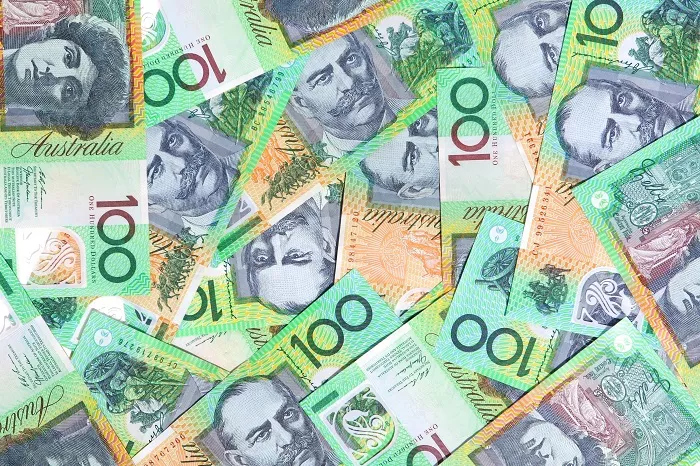The Australian Dollar (AUD) saw a slight decline against the US Dollar (USD) following the release of stronger-than-expected economic data from Australia on Friday. Australia’s Judo Bank Purchasing Managers Index (PMI) showed improvements, with the Manufacturing PMI rising to 50.6 in February from 50.2 in January. The Services PMI also increased to 51.4 from 51.2, and the Composite PMI edged up to 51.2 from 51.1. However, the AUD/USD pair found some support after news emerged that US President Donald Trump had indicated progress in trade negotiations with China, helping to ease market concerns about potential tariffs.
RBA’s Bullock Cautions on Premature Rate Cuts
Despite the stronger PMI figures, the Australian Dollar faced downward pressure as Reserve Bank of Australia (RBA) Governor Michele Bullock voiced caution over easing monetary policy too quickly. Bullock warned that aggressive rate cuts could stall disinflation efforts, potentially keeping inflation above the target midpoint. She reiterated the RBA’s commitment to a data-driven approach, emphasizing the importance of careful risk assessment. While rate cuts remain on the table, Bullock stressed the need for a measured approach to ensure inflation remains under control.
US Dollar Struggles Following Weak Jobless Claims and Mixed Fed Signals
The US Dollar Index (DXY), which tracks the USD against a basket of major currencies, was trading around 106.50 but faced some headwinds after weaker-than-expected US jobless claims data. For the week ending February 14, Initial Jobless Claims rose to 219,000, surpassing expectations of 215,000. Continuing Jobless Claims increased to 1.869 million, slightly below the forecast of 1.87 million.
Mixed signals from the Federal Reserve also contributed to the USD’s struggles. Federal Reserve Governor Adriana Kugler suggested that inflation still had a long way to go before reaching the central bank’s 2% target, creating uncertainty about the timing of future rate cuts. St. Louis Fed President Alberto Musalem expressed concerns over potential stagflation and rising inflation expectations, while Atlanta Fed President Raphael Bostic left the door open for two rate cuts this year, depending on economic conditions.
Trump’s Trade Comments Provide Some Relief
US President Trump’s comments regarding a potential new trade deal with China and his indication that Chinese President Xi Jinping could visit further supported market sentiment. Trump also mentioned ongoing discussions about the popular app TikTok and indicated a 25% tariff could be imposed on lumber and forest products. These developments are seen as a potential easing of global trade tensions, which helped lift risk sentiment.
Australian Job Data and RBA’s Stance on Monetary Policy
Data from the Australian Bureau of Statistics (ABS) showed that Australia’s Unemployment Rate rose slightly to 4.1% in January, up from 4.0% in December, in line with market expectations. Additionally, Employment Change for January came in at 44,000, down from the revised 60,000 in December but still significantly above the consensus forecast of 20,000.
RBA Deputy Governor Andrew Hauser remarked that the central bank’s policy remains restrictive, with the latest employment data showing little cause for concern. Earlier this week, the RBA had implemented a 25 basis point rate cut to 4.10%, marking the first rate reduction in four years. Governor Bullock acknowledged the impact of high interest rates on the economy but emphasized that it was too soon to declare victory over inflation, leaving future rate cuts uncertain despite market expectations.
Technical Analysis: AUD/USD Eyes Key 0.6400 Level
On the technical front, the AUD/USD pair traded near the psychological resistance level of 0.6400 on Friday. The pair is within an ascending channel, indicating a generally bullish market sentiment. The 14-day Relative Strength Index (RSI) remains above 50, reinforcing the positive outlook.
Immediate resistance is seen at the 0.6400 level, with further upside potential toward the upper boundary of the channel around 0.6420. On the downside, support is expected at the nine-day Exponential Moving Average (EMA) at 0.6350, followed by the 14-day EMA at 0.6330. A stronger support zone lies near the lower boundary of the ascending channel at 0.6320.
Related topics:
Trump Proposes DOGE Savings for Citizens, Defends Cost-Cutting Measures Amid Criticism
Trump’s Policy Shifts Fail to Move Oil Markets as Expected
Wesfarmers Warns of Inflation Risks Amid Profit Beat and Price Hikes Considerations


